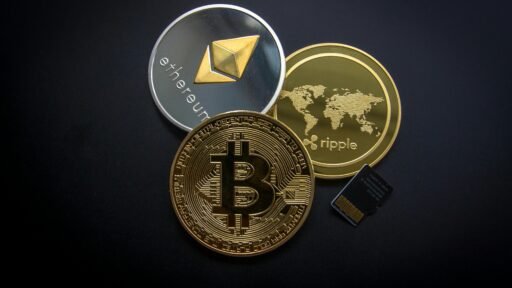The term “metaverse” has been buzzing around tech circles, gaming communities, and even financial discussions for quite some time now. It’s one of those words that feels futuristic, like something ripped straight out of a sci-fi novel. But what exactly is it? And more importantly, where does cryptocurrency fit into this evolving digital universe? Let’s dive deep into this fascinating intersection of virtual worlds and decentralized finance to unpack what’s really going on.
Understanding the Concept of the Metaverse
Picture a digital space where you can interact with others, create, trade, and even live a second life. That’s the basic idea behind the metaverse. It’s not just one platform or game; it’s a collection of interconnected virtual environments where people can socialize, work, or simply explore. Think of it as the internet, but instead of scrolling through pages, you’re walking through immersive, three-dimensional landscapes.
The metaverse isn’t a single entity. It’s a network of digital realms, each with its own rules and features. Some spaces might look like massive multiplayer online games, while others could resemble virtual office setups or even digital art galleries. The possibilities are endless, and that’s what makes it so exciting.
Now, you might be wondering, “Why is everyone talking about this now?” The answer lies in technology. Advances in augmented reality (AR), virtual reality (VR), and blockchain have made it possible to create these interactive spaces. Devices like VR headsets and AR glasses are becoming more accessible, while blockchain provides the infrastructure for secure transactions and ownership in these digital worlds.
The Role of Ownership and Identity
One of the key aspects of the metaverse is ownership. In the physical world, you own your house, car, or phone. In the metaverse, ownership works differently. You might own a piece of virtual land, a unique digital outfit for your avatar, or even a rare collectible item. This is where blockchain technology comes into play.
Blockchain allows for the creation of non-fungible tokens (NFTs), which are unique digital assets that can’t be replicated. These tokens serve as proof of ownership for items in the metaverse. For example, if you buy a virtual painting, the NFT acts as a certificate that proves you’re the rightful owner. This concept of digital ownership is revolutionary because it gives value to virtual goods in a way that’s verifiable and secure.
Identity also plays a significant role. In these digital spaces, your avatar represents you. It’s not just a character; it’s an extension of yourself. Customizing your avatar, owning unique items, and establishing a presence in the metaverse all contribute to your digital identity. Blockchain ensures that this identity is secure and can’t be tampered with.
The Connection Between Crypto and the Metaverse
Cryptocurrency is the backbone of the metaverse economy. Traditional payment systems don’t work well in these virtual spaces for several reasons. First, they’re not designed for microtransactions, which are common in gaming and digital environments. Second, they rely on centralized systems, which go against the decentralized nature of the metaverse.
Enter crypto. Digital currencies like Ethereum, Bitcoin, and others provide a seamless way to transact in the metaverse. They’re fast, secure, and decentralized, making them ideal for this new digital frontier. But it doesn’t stop there. Cryptocurrencies also enable the creation of decentralized applications (dApps) and smart contracts, which are essential for building and running metaverse platforms.
Smart contracts, for instance, can automate transactions and enforce agreements without the need for intermediaries. Let’s say you’re renting out a virtual property in the metaverse. A smart contract can handle the entire process, from collecting payment to transferring access rights, without any human intervention. This level of automation and trust is a game-changer for digital economies.
Virtual Real Estate and Crypto
Owning land in the metaverse might sound strange, but it’s actually a booming market. Platforms like Decentraland and The Sandbox allow users to buy, sell, and develop virtual real estate. These plots of land are represented as NFTs, giving owners full control over their properties.
Why would anyone want to own virtual land? The reasons vary. Some see it as an investment opportunity, hoping that the value of their property will increase over time. Others use their land to build experiences, such as games, art installations, or virtual stores. Brands are also getting in on the action, using virtual spaces to engage with customers in new and innovative ways.
Cryptocurrency plays a crucial role in this ecosystem. Transactions for buying and selling land are conducted using digital currencies, and smart contracts handle the transfer of ownership. This creates a transparent and efficient marketplace for virtual real estate.
Gaming and Play-to-Earn Models
Gaming is one of the most popular use cases for the metaverse, and crypto is transforming how we think about in-game economies. Traditional games have centralized systems where developers control everything, from the currency to the items players can earn or buy. The metaverse flips this model on its head.
In a decentralized gaming environment, players truly own their in-game assets. These assets are often represented as NFTs, allowing players to trade them freely on secondary markets. This ownership model has given rise to play-to-earn games, where players can make real money by participating in the game.
Axie Infinity is a prime example. In this game, players collect and battle creatures called Axies, which are represented as NFTs. By winning battles and completing tasks, players earn cryptocurrency, which can be converted into real-world money. This play-to-earn model is revolutionizing the gaming industry and attracting a new wave of players who see games not just as entertainment but as a source of income.
Challenges and Risks
While the metaverse and crypto offer exciting opportunities, they’re not without challenges. One major issue is accessibility. Not everyone has access to the hardware and internet speeds required for a seamless metaverse experience. This creates a digital divide, where only those with the means can participate fully.
Another concern is regulation. Governments around the world are still figuring out how to regulate cryptocurrencies and NFTs. This uncertainty can create risks for investors and users. Additionally, the decentralized nature of these technologies makes it difficult to enforce rules and protect users from scams or fraud.
Environmental impact is another hot topic. Blockchain networks, especially those using proof-of-work consensus mechanisms, consume a lot of energy. This has led to criticism about the environmental footprint of cryptocurrencies and NFTs. However, newer technologies like proof-of-stake are addressing these concerns by being more energy-efficient.
The Future of the Metaverse and Crypto
Despite these challenges, the future of the metaverse and crypto looks bright. As technology continues to evolve, we can expect even more immersive experiences and innovative use cases. The integration of artificial intelligence, for example, could make virtual worlds more dynamic and responsive. Imagine a metaverse where NPCs (non-playable characters) are powered by AI, making interactions feel more lifelike.
Interoperability is another area to watch. Currently, most metaverse platforms operate in silos, meaning assets and currencies can’t easily move between them. Efforts are underway to create standards that allow for seamless interaction between different virtual worlds. This would make the metaverse more cohesive and user-friendly.
Crypto will continue to play a central role in this evolution. As adoption grows, we’ll likely see more sophisticated financial tools and services tailored for the metaverse. Decentralized finance (DeFi) platforms could offer loans, insurance, and other financial products specifically designed for virtual economies.
Why It Matters
The metaverse and crypto are more than just buzzwords; they represent a shift in how we interact with technology and each other. They’re creating new opportunities for creativity, commerce, and connection. Whether you’re an artist, a gamer, or an entrepreneur, the metaverse offers a space to explore and innovate.
Cryptocurrency, with its decentralized and transparent nature, provides the foundation for these digital worlds to thrive. It enables ownership, facilitates transactions, and powers the economies of the metaverse. Together, they’re shaping a future that’s more immersive, inclusive, and interconnected.
So, whether you’re excited, skeptical, or somewhere in between, one thing is clear: the metaverse and crypto are here to stay. The only question is, how will you choose to engage with this new digital frontier?




